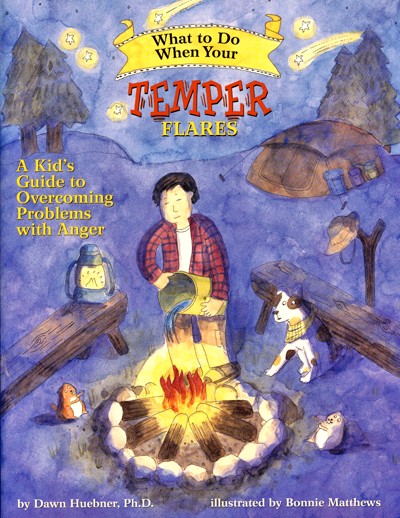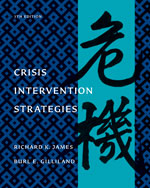
5 Anger Management Methods For Individuals With Special Needs
Everyone experiences anger sometimes. But for some people, anger is a force that damages relationships, limits community involvement and creates unsafe situations. Most specialists in anger management encourage people to verbalize their emotions and seek positive outlets for negative feelings. But what if a person can’t verbalize emotions? What if mood shifts happen so quickly that there’s no time to seek a positive outlet?
These are the people who need the most help with anger management: those with traumatic brain injury, autism, ADHD, sensory processing disorder and other neurological conditions. The strategies recommended by professionals may not work in these cases.
As my son gets older, his outbursts have thankfully diminished in frequency and intensity. But they still occur. Soon he’ll be bigger than I am, and since I’m over 6 feet tall, he’ll also be bigger than most first responders. Thus my interest in anger management and crisis prevention.
Prevention of anger-driven episodes is easier than active intervention. Although there is little research available on anger management for individuals with special needs, I found several applicable methods for both prevention and active anger management.
Prevention
1. Attachment
AskDrSears.com recommends strengthening a positive emotional connection with a person as a way of mitigating anger. Dr. Sears writes, “The unconnected child operates from inner turmoil. Down deep this child feels something important is missing in his self and he is angry about it. (This feeling may continue into adulthood.) This void is likely to reveal itself as anger toward himself and parents, placing everyone at risk for becoming an angry family.”
Parents and caregivers can model peaceful resolutions to everyday problems. When anger does come to the forefront, parents can explain how they are working through it - sometimes the explanation is enough of a distraction to take the edge off. Seeing a caregiver become angry can be very confusing for a person with special needs, and he or she often needs some type of confirmation that the emotional connection is still there, unconditionally. Try to find an activity every day that requires eye contact and generates positive emotions.
2. Emotional expression
Verbal expression may not be possible for some people with disabilities, but it’s never too early to teach and model self-advocacy. If a person can make known his or her likes and dislikes through alternative methods of communication such as PECS or sign language, it is possible to prevent some types of angry situations.
Because play is a natural part of human development, play therapy is a highly effective way to learn emotional expression. My son and I used Fisher-Price Little People and Barbies to act out scenarios from his memory - events that made him happy and events that upset him. Play therapy allowed him to explore his emotions in a safe environment.
Art therapy is increasingly recommended for individuals with traumatic brain injury or Post-Traumatic Stress Disorder. Open-ended self-expression can help build an inner calmness and confidence, without the use of language. Art therapist Cathy Malchiodi explains, “The function of the art therapist is not necessarily to place a psychological interpretation on the child’s work, but rather to provide a supportive environment to express himself and work through his conflicts in a creative way.
3. Exercise
Vigorous exercise is a well-known natural remedy for anger. Physical activity not only provides a distraction from anger, but it also stimulates the production of hormones associated with positive emotions and uses the energy of anger for something more productive. For some, a morning exercise routine helps to start the day on the right foot. Others exercise as soon as they recognize the first warning signs for rage. In my home, I provide “heavy work,” that is, an activity that requires pushing or pulling, to help regulate emotions: vacuuming the stairs, pushing a wheelbarrow full of mulch around the yard, shoveling snow, and so on. The advantage of heavy work is the sense of accomplishment afterwards!
Active Anger Management
4. Cognitive behavioral therapy
The method recommended by the American Psychological Association (APA) for the management of anger - and all types of emotions and emotional thought processes - is cognitive behavioral therapy. Cognitive behavioral therapy addresses the thoughts surrounding emotions and teaches concrete skills to avoid problems related to powerful emotions. Social stories are an excellent way to start the cognitive process of recognizing emotions. Using first-person language, write the story to show step-by-step how to cope with anger.
 The APA has a series of workbooks for children about handling emotions, including one for anger: What To Do When Your Temper Flares by Dawn Huebner. The workbooks are all based on principles of cognitive-behavioral therapy and include activities such as drawing things that make a person angry, breathing slowly to release anger and working out a problem to get what we actually want.
The APA has a series of workbooks for children about handling emotions, including one for anger: What To Do When Your Temper Flares by Dawn Huebner. The workbooks are all based on principles of cognitive-behavioral therapy and include activities such as drawing things that make a person angry, breathing slowly to release anger and working out a problem to get what we actually want.
5. Nonviolent crisis intervention training
Most school districts now have a crisis intervention team that has gone through specialized training in de-escalating tense or dangerous situations. Non-violent crisis intervention teaches that verbal suggestions, physical intervention or restraint can actually be counterproductive and make a situation more dangerous. Ask which crisis intervention method your school district or social service agency uses, and ask if caregivers may attend training to provide consistency at home.
Keep in mind that every IEP has a legally required, but usually ignored, section for parent training. You may be able to receive crisis intervention training at no cost to yourself by having it written into the IEP as parent training, or request a copy of a standard crisis intervention textbook, such as Crisis Intervention Strategies by Richard James, for your personal use.
training. You may be able to receive crisis intervention training at no cost to yourself by having it written into the IEP as parent training, or request a copy of a standard crisis intervention textbook, such as Crisis Intervention Strategies by Richard James, for your personal use.
Anger cannot be completely stamped out. But by managing anger with patience and love, we can strengthen relationships instead of destroying them.



